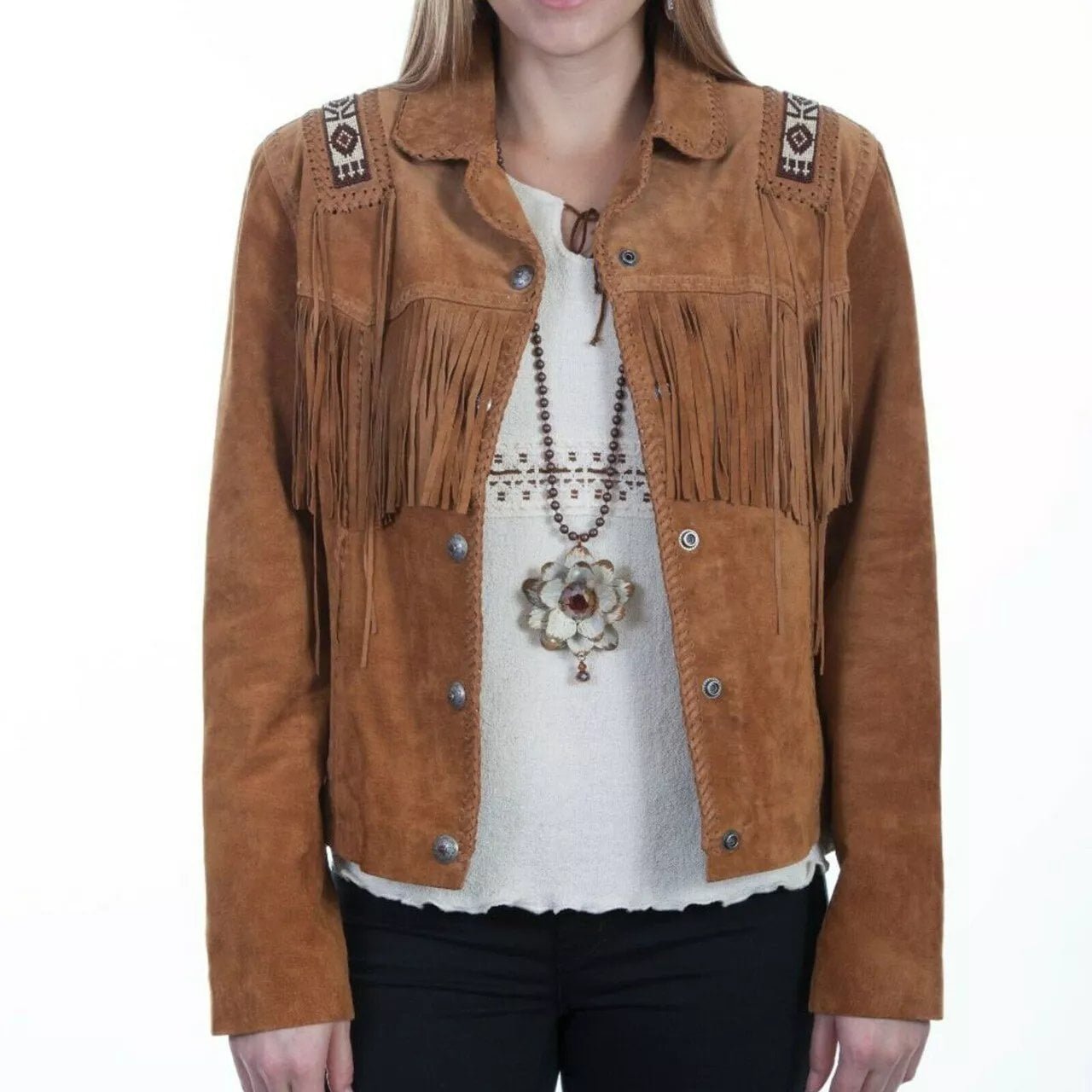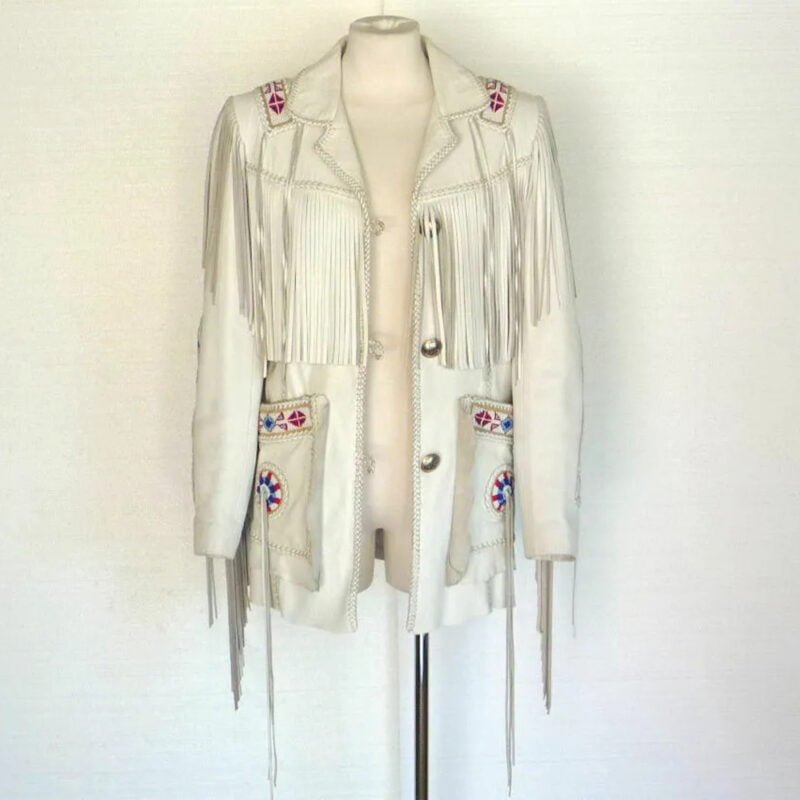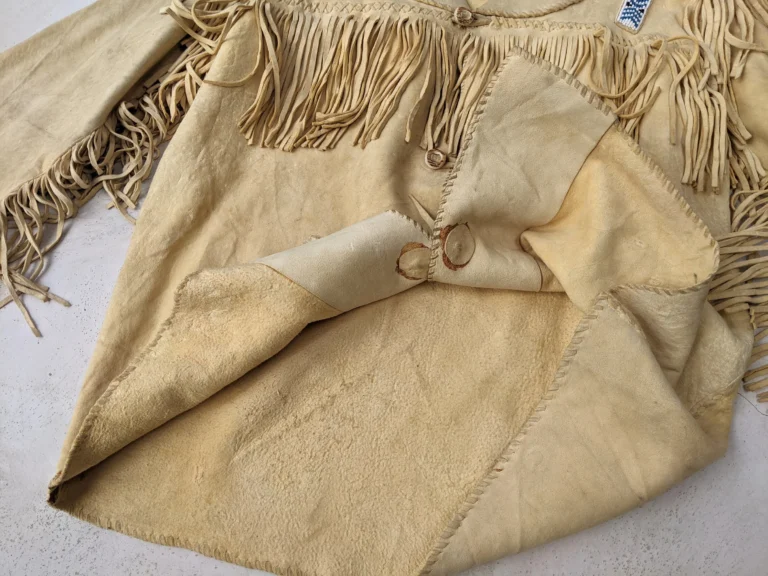Native American Jackets for Ladies
Introduction to Native American Fashion
Native American fashion is a robust tapestry of cultural heritage, historical significance, and intricate craftsmanship. For centuries, various tribes have contributed to this unique fashion style, with each tribe’s attire representing more than just clothing—it is a manifestation of identity, artistic expression, and cultural heritage. Women’s jackets, in particular, hold a prominent place in the legacy of Native American fashion, symbolizing both functionality and artistry. These garments have evolved over time, adapting to changing environments and societal advancements while retaining their traditional roots.
The historical significance of Native American attire cannot be overstated. In many tribes, clothing was and continues to be a way to convey status, familial ties, and spiritual beliefs. Different materials, patterns, and adornments are often employed to signify various aspects of an individual’s identity and heritage. For instance, intricate beadwork, vibrant dyes, and animal hides traditionally used in creating these jackets not only serve functional purposes but also tell rich, storied histories.

Among the myriad tribes known for their distinctive fashion contributions are the Navajo, known for their woven textiles; the Cherokee, recognized for their intricate beadwork; and the Sioux, famed for their elaborate quillwork. Each piece crafted by these tribes carries a story—a weaving of culture, tradition, and craftsmanship. This diverse representation encapsulates the spirit and resilience of Native American communities, making each jacket more than just an article of clothing but a symbol of ongoing cultural expression.
As contemporary fashion continues to evolve, the influence of Native American style persists. Modern designers often draw inspiration from these traditional garments, blending time-honored techniques with contemporary aesthetics. This harmonious fusion highlights not only the versatility and timelessness of Native American fashion but also its enduring relevance in today’s sartorial landscape.
Materials and Craftsmanship
When delving into the elegance and symbolism of Native American jackets, one cannot overlook the importance of the materials and craftsmanship that go into their creation. Native American jackets for ladies often utilize natural resources, each imbued with both practical benefits and cultural significance. Leather, suede, and wool are among the most commonly used materials, celebrated not just for their durability but also for their inherent connection to nature.
Leather and suede, sourced predominantly from deer, bison, or elk, serve as the backbone of many traditional Native American jackets. These materials are not only durable and weather-resistant but also tell a story of the relationship between indigenous communities and their environment. The process of tanning and preparing leather is a skill passed down through generations, and each jacket carries with it the weight of history and tradition.

Wool, often used to provide warmth and comfort, finds its place in these jackets with equal significance. The weaving techniques employed in crafting woolen jackets are intricate and require immense skill. Dyeing the wool with natural colors sourced from plants and minerals is another testament to the deep connection between the artisans and the natural world.
Beyond the materials, the craftsmanship involved in creating Native American jackets is a testament to the skill and dedication of the artisans. Beading and embroidery are perhaps the most striking aspects of these garments. Seed beads, which are meticulously hand-sewn in elaborate patterns, often tell stories or represent tribal symbols. Each beadwork design is unique, a beautiful amalgamation of aesthetics and meaning.
Fringe work, another hallmark of Native American jackets, serves both decorative and functional purposes. The lengthy strips of leather or suede add movement and flair to the jacket, while also providing additional windproofing. This technique, requiring precision and care, further highlights the comprehensive artisanship involved.
Artisans often draw upon traditional methods handed down through generations, ensuring that each jacket is a work of art imbued with cultural heritage. Interviews with craftspeople consistently reveal a profound sense of pride and responsibility in preserving these time-honored techniques.
Modern Interpretations and Designers
In recent years, the fashion industry has seen a surge in the appreciation and incorporation of Native American styles into mainstream fashion. This cultural fusion is not just a passing trend but a meaningful homage to the rich legacy and artistry of Native American heritage. One of the key figures driving this movement is Bethany Yellowtail, a Northern Cheyenne and Crow Tribe member, whose brand Bravohide brings traditional patterns and techniques to modern silhouettes. Her use of indigenous symbolism in contemporary design has garnered significant critical acclaim, both on the runway and beyond.

How to Style Native American Jackets
Native American jackets are rich in cultural symbolism and make for striking additions to any wardrobe. Styling them in a way that showcases their beauty while respecting their cultural significance is crucial. Here are some practical fashion tips for incorporating these exquisite garments into your everyday wardrobe.
For a casual look, pair your Native American jacket with a simple t-shirt and a pair of jeans. This combination allows the jacket to be the focal point of your ensemble. Opt for classic hues like blue or black jeans to keep the look grounded. For footwear, consider boots with subtle detailing to complement the intricate designs of the jacket. Alternatively, a pair of leather sneakers can add a modern twist, making the outfit more relaxed and suitable for everyday wear.
If you’re aiming for a more formal attire, try layering your Native American jacket over a fitted dress or a tailored skirt and blouse combo. Neutral-colored skirts and dresses work best to ensure that the jacket remains the statement piece. Accessorize sparingly with elegant jewelry; think along the lines of silver or turquoise pieces which can highlight the jacket’s details while adding a touch of sophistication to your look.
Seasonal considerations are also important when styling Native American jackets. In colder months, choose a jacket that is lined and thicker in fabric. Layer it over a cozy sweater and add a wool scarf for added warmth. In the warmer months, lighter jackets can be worn over tank tops or summer dresses. Avoid overly bright colors for the rest of your outfit; instead, select earthy tones that resonate with the jacket’s natural aesthetic.
For special events, opt for a jacket with elaborate beadwork or embroidery. Pair it with simple, tailored pants or an elegant maxi dress to create a balanced look. Muted accessories are preferred to maintain the focus on the jacket’s intricate designs. Finally, always wear these beautiful garments with respect and understanding of their cultural and historical significance.


